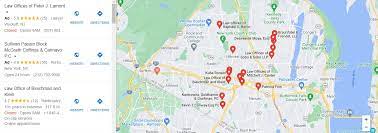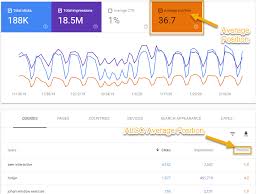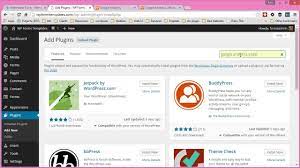Local Maps SEO: Boosting Your Business’s Online Visibility
In today’s digital age, having a strong online presence is crucial for businesses of all sizes. One effective way to increase your online visibility and attract local customers is through Local Maps SEO (Search Engine Optimization). By optimizing your business’s presence on local maps, you can improve your chances of being found by potential customers in your area. In this article, we will explore the importance of Local Maps SEO and provide some tips to help you get started.
What is Local Maps SEO?
Local Maps SEO refers to the process of optimizing your business’s online listing on popular map platforms such as Google Maps, Apple Maps, and Bing Maps. When users search for products or services in their local area, these map platforms display relevant businesses based on their location and search terms. By optimizing your business listing, you increase the likelihood of appearing in these search results.
The Importance of Local Maps SEO
Increased Online Visibility: When your business appears on local maps, it becomes more visible to potential customers who are actively searching for products or services in their area. This increased visibility can lead to more website visits, phone calls, and foot traffic to your physical location.
Targeted Reach: Local maps allow you to target customers within a specific geographic area. This targeting is particularly beneficial for businesses that rely on local clientele or have physical stores that people can visit.
Trust and Credibility: Being listed on reputable map platforms enhances your business’s credibility and instills trust in potential customers. Users often trust businesses that appear on respected map platforms as they perceive them as reliable and legitimate.
Tips for Optimizing Your Business Listing
Claim Your Business: Start by claiming your business listing on popular map platforms such as Google My Business, Apple Maps Connect, and Bing Places for Business. This allows you to manage and update the information displayed about your business.
Provide Accurate Information: Ensure that your business’s name, address, phone number (NAP), and website are accurate and consistent across all platforms. Inaccurate information can confuse potential customers and harm your local search rankings.
Choose Relevant Categories: Select appropriate categories that accurately describe your business. This helps search engines understand what your business offers and improves the chances of appearing in relevant searches.
Optimize Your Description: Craft a compelling and informative business description that highlights your unique selling points and includes relevant keywords. This can improve your visibility in local search results.
Encourage Customer Reviews: Positive customer reviews play a significant role in influencing potential customers. Encourage satisfied customers to leave reviews on your map listings, as this can boost your credibility and improve your rankings.
Add High-Quality Photos: Upload high-quality images of your business, products, or services to make your listing visually appealing and engaging for users.
Monitor and Respond to Reviews: Regularly monitor customer reviews on map platforms and respond promptly to both positive and negative feedback. This demonstrates excellent customer service and shows potential customers that you value their opinions.
Conclusion
Investing time and effort into Local Maps SEO can significantly benefit your business by increasing online visibility, targeting local customers, and building trust with potential clients. By claiming and optimizing your business listing on popular map platforms, you can enhance your chances of being found by customers searching for products or services in their area. Remember to regularly update information, encourage customer reviews, and provide excellent customer service to maximize the benefits of Local Maps SEO for your business’s growth.
6 Essential Tips for Local Maps SEO Success
- Make sure your business name, address, and phone number (NAP) are consistent across all local listings.
- Claim your business listing on Google My Business and other local directories like Yelp, Bing Places for Business, Yellow Pages, etc.
- Optimize your website for local SEO by including relevant keywords and location-specific content in the title tags, meta descriptions, headings, etc.
- Get quality backlinks from local websites to increase your page rank in search engine results pages (SERPs).
- Monitor customer reviews on sites like Google My Business and respond promptly to any negative feedback you receive.
- Utilize Schema markup to help search engines understand the context of your content more accurately and improve visibility in SERPs for local searches related to your business or services
Make sure your business name, address, and phone number (NAP) are consistent across all local listings.
Consistency is Key: Ensure Your NAP is Uniform Across Local Listings
When it comes to Local Maps SEO, one crucial tip that often gets overlooked is the importance of maintaining consistency in your business’s name, address, and phone number (NAP) across all local listings. This seemingly simple step can have a significant impact on your online visibility and search rankings. In this article, we’ll explore why NAP consistency matters and how it can benefit your business.
Why is NAP Consistency Important?
Enhanced Search Engine Understanding: Search engines rely on accurate and consistent information to understand and index your business correctly. When your NAP information is inconsistent across different local listings, search engines may struggle to determine which information is accurate, leading to confusion and potential negative consequences for your local search rankings.
Improved User Experience: Consistent NAP information ensures that potential customers can easily find and contact your business. If a user comes across different addresses or phone numbers for your business on various platforms, they may become frustrated or lose trust in the accuracy of the information provided.
Trust and Credibility: Consistency builds trust with both search engines and users. When search engines see consistent NAP information across multiple sources, they are more likely to view your business as reliable and legitimate. Similarly, users tend to trust businesses with consistent information as they perceive them as more professional and trustworthy.
Tips for Maintaining NAP Consistency
Audit Your Existing Listings: Start by conducting an audit of all the local listings where your business is listed. This includes popular map platforms like Google Maps, Apple Maps, Bing Maps, as well as other directories specific to your industry or region.
Update Inaccurate Listings: Identify any inconsistencies or inaccuracies in your NAP information during the audit process. Take the necessary steps to correct these errors by updating the listings with the correct and consistent information.
Keep a Record: Maintain a record of your business’s NAP information, including the exact formatting and abbreviations used. This record will serve as a reference when creating or updating future listings.
Be Thorough in New Listings: When creating new local listings, ensure that you input your business’s NAP information accurately and consistently. Double-check the details before submitting to avoid any potential discrepancies.
Monitor and Update Regularly: Local listings can change over time due to various factors such as moving locations or phone number changes. Regularly monitor your existing listings and update them promptly if any changes occur to maintain consistency.
Conclusion
Maintaining consistency in your business’s name, address, and phone number (NAP) across all local listings is a critical aspect of Local Maps SEO. By ensuring that your NAP information is accurate and uniform, you enhance search engine understanding, improve user experience, and build trust and credibility with both search engines and potential customers. Take the time to audit your existing listings, update inaccuracies, keep a record of your NAP information, be thorough in new listings, and regularly monitor and update your local listings. Remember, when it comes to NAP consistency, every detail matters in boosting your business’s online visibility.
Claim your business listing on Google My Business and other local directories like Yelp, Bing Places for Business, Yellow Pages, etc.
Boost Your Online Presence with Local Maps SEO: Claim Your Business Listings
In the digital age, having a strong online presence is essential for businesses looking to thrive and attract local customers. One crucial tip for improving your Local Maps SEO (Search Engine Optimization) is to claim your business listing on popular platforms like Google My Business, Yelp, Bing Places for Business, Yellow Pages, and more. By taking control of your online presence in these directories, you can enhance your visibility and connect with potential customers in your area.
Claiming your business listing is the first step toward optimizing your online presence. Here’s why it’s important:
- Enhanced Visibility: When you claim your business on platforms like Google My Business, Yelp, and Bing Places for Business, you ensure that accurate information about your business is displayed to potential customers. This includes essential details such as your address, phone number, website link, hours of operation, and customer reviews. By providing accurate and up-to-date information across these directories, you increase the chances of appearing in relevant local searches.
- Consistency Is Key: Consistency is crucial when it comes to Local Maps SEO. Ensure that the information you provide on each platform matches precisely with what’s listed on other directories as well as your website. Inconsistent information can confuse search engines and potential customers alike, negatively impacting your local search rankings.
- Customer Trust: Claiming and managing your business listings demonstrates professionalism and reliability to potential customers. It shows that you are actively engaged in maintaining an accurate online presence and value their experience when interacting with your brand. This builds trust and encourages users to choose your business over competitors.
- Review Management: Many directory platforms allow customers to leave reviews about their experiences with businesses. By claiming your listings, you gain control over responding to reviews promptly – both positive and negative ones. Engaging with customer feedback shows that you care about their opinions and are committed to providing excellent service, which can positively impact your reputation and attract more customers.
- Additional Exposure: Claiming your business listings on multiple platforms expands your reach beyond just Google. Platforms like Yelp, Yellow Pages, and Bing Places for Business have their own user bases and can help you connect with potential customers who prefer those platforms or use them exclusively.
Remember, claiming your business listings is just the first step. Regularly update your information, respond to reviews, and ensure consistency across all platforms to maximize the benefits of Local Maps SEO. By taking control of your online presence through these directories, you can boost your visibility, build trust with customers, and ultimately drive more traffic to your business.
Investing time in claiming and optimizing your business listings is a worthwhile effort that can yield significant results in growing your local customer base. Start by claiming your business on popular directories today and take control of how you appear online!
Optimize your website for local SEO by including relevant keywords and location-specific content in the title tags, meta descriptions, headings, etc.
Optimize Your Website for Local SEO: The Power of Relevant Keywords and Location-Specific Content
When it comes to Local Maps SEO, optimizing your website is key to improving your online visibility and attracting local customers. One effective strategy is to include relevant keywords and location-specific content in your website’s title tags, meta descriptions, headings, and other elements. In this article, we will explore the importance of this tip and how it can boost your local search rankings.
Why Optimize for Local SEO?
Local SEO focuses on targeting customers within a specific geographic area. By optimizing your website for local searches, you increase the chances of appearing in relevant search results when users are looking for products or services in their vicinity. This can lead to increased website traffic, more qualified leads, and ultimately, higher conversion rates.
The Power of Relevant Keywords
To optimize your website for local SEO, start by conducting keyword research. Identify keywords that are relevant to your business niche and location. For example, if you run a bakery in New York City, target keywords like “New York City bakery” or “best bakery in NYC.” Incorporate these keywords naturally throughout your website’s content, including title tags, meta descriptions, headings (H1 tags), image alt text, and body text.
Including Location-Specific Content
In addition to keywords, incorporating location-specific content is crucial for local SEO optimization. Create dedicated pages or sections on your website that highlight information about the areas you serve. This could include mentioning nearby landmarks or neighborhoods in your content or providing localized testimonials from satisfied customers.
Furthermore, consider creating location-specific landing pages for each area you target. These pages can provide detailed information about the products or services you offer in that particular location. Remember to include the relevant keywords naturally within these pages as well.
Benefits of Optimizing Your Website
By optimizing your website with relevant keywords and location-specific content:
- You increase the visibility of your website in local search results, making it easier for potential customers to find you.
- You improve your website’s relevance and authority in search engines’ eyes, boosting your local search rankings.
- You attract highly targeted traffic from users who are actively seeking products or services in your area.
- You enhance the user experience by providing relevant information that matches their search intent.
Conclusion
Optimizing your website for local SEO through the strategic use of relevant keywords and location-specific content is a powerful way to improve your online presence and attract local customers. By incorporating these elements into your title tags, meta descriptions, headings, and other areas of your website, you increase the chances of ranking higher in local search results and connecting with potential customers who are looking for businesses like yours in their area. Take advantage of this tip to boost your local SEO efforts and drive more qualified traffic to your website.
Get quality backlinks from local websites to increase your page rank in search engine results pages (SERPs).
Boost Your Local Maps SEO with Quality Backlinks
When it comes to Local Maps SEO, there are various strategies you can employ to improve your business’s visibility. One effective tip is to focus on acquiring quality backlinks from local websites. Backlinks play a crucial role in search engine optimization, and when obtained from reputable local sources, they can significantly enhance your page rank in search engine results pages (SERPs).
So, how exactly do quality backlinks from local websites impact your Local Maps SEO efforts? Let’s delve into it.
Enhanced Relevance:
When you obtain backlinks from local websites that are relevant to your industry or location, search engines recognize the connection and consider your website as more relevant to local searches. This relevance increases the likelihood of your business appearing in local map listings and SERPs when users search for products or services in your area.
Increased Authority:
Backlinks from authoritative local websites act as endorsements for your business. When reputable local sources link to your website, search engines perceive it as a vote of confidence and view your website as more trustworthy and authoritative. This boost in authority can positively impact your page rank in SERPs.
Improved Organic Traffic:
Quality backlinks not only help with Local Maps SEO but also contribute to organic traffic generation. When users visit local websites that have linked to yours, they may be inclined to click on the link and visit your website out of curiosity or interest. This increased organic traffic can lead to higher engagement, conversions, and ultimately improved search rankings.
To acquire quality backlinks from local websites, consider implementing these strategies:
Engage with Local Businesses:
Reach out to other businesses in your area that complement but do not directly compete with yours. Offer collaborations or partnerships that benefit both parties and may lead to them linking to your website.
Sponsor Local Events or Charities:
Supporting local events or charities not only helps your community but also provides an opportunity to gain backlinks. Many event organizers or charity websites are happy to acknowledge their sponsors by linking to their websites.
Guest Blog on Local Websites:
Offer to write informative and valuable guest blog posts for local websites in your industry. This allows you to showcase your expertise while gaining a backlink in return.
Participate in Local Directories:
Submit your business information to reputable local directories and industry-specific listing sites. These platforms often provide opportunities for backlinks and can improve your online visibility.
Remember, the key is to focus on quality rather than quantity when it comes to backlinks. Aim for links from authoritative and relevant local sources, as search engines value these more than numerous low-quality links. By incorporating this tip into your Local Maps SEO strategy, you can boost your page rank in SERPs and increase your online visibility within your target local market.
Monitor customer reviews on sites like Google My Business and respond promptly to any negative feedback you receive.
The Power of Monitoring and Responding to Customer Reviews in Local Maps SEO
In today’s digital landscape, online customer reviews hold significant influence over consumer behavior. When it comes to Local Maps SEO, monitoring and responding to customer reviews on platforms like Google My Business can have a profound impact on your business’s online reputation and local search rankings.
Why Monitor Customer Reviews?
Monitoring customer reviews allows you to stay informed about what people are saying about your business. Positive reviews provide valuable social proof, attracting potential customers and boosting your credibility. On the other hand, negative reviews can harm your reputation if left unaddressed. By actively monitoring these reviews, you gain insights into areas where you excel and areas that may need improvement.
Promptly Responding to Negative Feedback
Negative feedback is inevitable for any business, but how you handle it can make a world of difference. When you receive a negative review, it’s essential to respond promptly and professionally. Here’s why:
Show Your Commitment to Customer Satisfaction: Responding promptly demonstrates that you value your customers’ opinions and are committed to addressing their concerns. It shows that you take feedback seriously and are dedicated to providing excellent customer service.
Address Issues Publicly: By responding publicly on platforms like Google My Business, you show not only the reviewer but also potential customers that you care about resolving problems. This transparency builds trust and showcases your willingness to engage with customers.
Mitigate Reputation Damage: Ignoring negative feedback can lead to further frustration for the reviewer and potentially damage your reputation in the eyes of other consumers who come across the review. Responding promptly allows you to address the issue directly, potentially turning a dissatisfied customer into a satisfied one.
Best Practices for Responding:
When crafting responses to negative reviews, keep these best practices in mind:
Be Professional: Maintain a calm and professional tone in all interactions with reviewers, regardless of their tone or language used. Responding with empathy and understanding can go a long way in diffusing the situation.
Acknowledge the Issue: Start by acknowledging the customer’s concerns and apologize for any negative experience they had. This shows that you genuinely care about their satisfaction.
Offer a Solution: Provide a solution or offer to resolve the issue, whether it’s through a refund, replacement, or any other appropriate action. Demonstrating your willingness to make things right can help rebuild trust with the reviewer and other potential customers.
Take It Offline: While it’s important to address the issue publicly, encourage further communication offline to discuss specific details or personal information. This allows for a more private and personalized resolution.
Conclusion
Monitoring and promptly responding to customer reviews is an integral part of Local Maps SEO strategy. By actively engaging with your customers, you can manage your online reputation effectively, build trust among potential customers, and improve your local search rankings. Remember, each negative review presents an opportunity to turn a dissatisfied customer into a loyal advocate for your business. Embrace these opportunities and showcase your commitment to exceptional customer service through thoughtful responses.
Utilize Schema markup to help search engines understand the context of your content more accurately and improve visibility in SERPs for local searches related to your business or services
Utilize Schema Markup: Enhancing Local Maps SEO and Visibility in SERPs
In the world of Local Maps SEO, standing out from the competition is essential to attract local customers. One effective technique to improve your business’s visibility in search engine results pages (SERPs) for local searches is by utilizing Schema markup. By implementing Schema markup, you can help search engines understand the context of your content more accurately, resulting in improved visibility and higher rankings. Let’s explore how Schema markup can benefit your Local Maps SEO strategy.
What is Schema Markup?
Schema markup is a structured data vocabulary that provides additional information about your website’s content to search engines. It helps search engines interpret and categorize your content more effectively, allowing them to display rich snippets or enhanced information in SERPs. By using specific Schema markup related to local businesses or services, you can provide search engines with valuable details about your business, such as its name, address, phone number, opening hours, customer reviews, and more.
The Benefits of Using Schema Markup for Local Maps SEO
Improved Contextual Understanding: By utilizing Schema markup specific to local businesses or services, you provide search engines with explicit information about your business’s location and offerings. This helps them understand the context of your content more accurately and display it prominently in relevant local searches.
Enhanced Visibility in SERPs: When search engines comprehend the context of your content better through Schema markup, they can present relevant information as rich snippets in SERPs. Rich snippets often include additional details such as star ratings from customer reviews or event dates, attracting users’ attention and increasing click-through rates.
Increased Credibility: Implementing Schema markup demonstrates that you are committed to providing accurate and detailed information about your business. This commitment enhances credibility and trustworthiness among potential customers who come across your business listing on local maps or in organic search results.
How to Implement Schema Markup for Local Maps SEO
Identify Relevant Schema Types: Research and identify the appropriate Schema types that align with your business or services. For local businesses, you can use schemas such as LocalBusiness, Restaurant, Store, or Service.
Add Schema Markup to Your Website: Once you have determined the relevant Schema types, add the corresponding markup to your website’s HTML code. You can do this manually or by using tools like Google’s Structured Data Markup Helper or schema.org’s markup generator.
Include Key Information: Within the Schema markup, ensure that you provide accurate and up-to-date information about your business, such as its name, address, phone number, opening hours, and any additional details specific to your industry.
Test and Monitor: After implementing the Schema markup on your website, use Google’s Structured Data Testing Tool or other similar tools to validate the markup. Regularly monitor your website’s performance in SERPs for local searches related to your business or services.
Conclusion
Utilizing Schema markup is a valuable strategy for improving your business’s visibility in Local Maps SEO and enhancing its presence in SERPs for local searches. By providing search engines with structured data about your business’s context through Schema markup implementation, you increase the chances of appearing prominently in relevant local search results. Take advantage of this powerful tool to boost your online visibility and attract more local customers to grow your business effectively.




